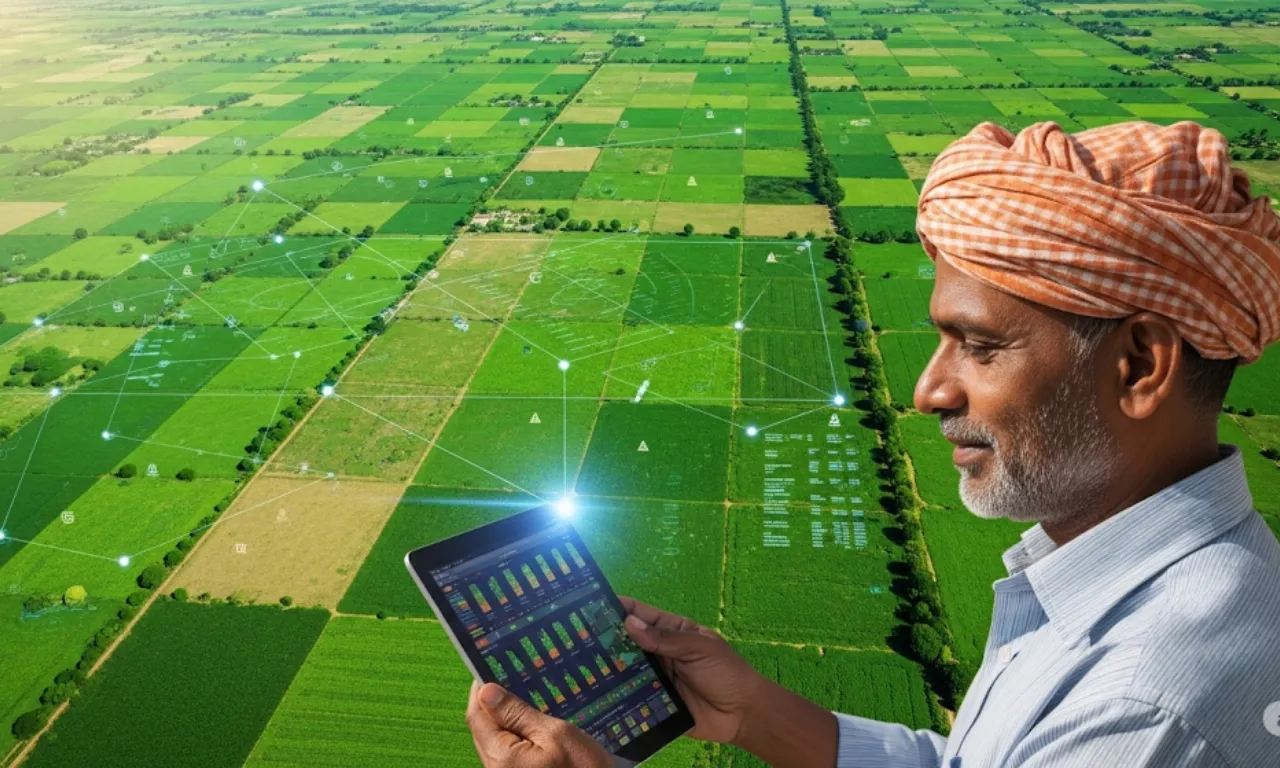- Chief Minister Chandrababu Naidu orders a detailed satellite survey for crop mapping across Andhra Pradesh.
- Combining satellite data, drones, AI chatbots, and real-time monitoring to update farming and improve yields.
- Focus on organic certification, integrated pest management, and water management to sustainably increase farmers’ income.
Andhra Pradesh is making a strong move forward with the AP satellite survey for crop mapping under the Crop Mapping Scheme. This plan uses advanced technology like satellite images, drones, and artificial intelligence to modernize farming, improve crop yields, and ultimately raise farmers’ income. Besides technology, the scheme focuses on sustainable farming methods such as organic certification and water management, showing a well-rounded approach to agriculture development in AP.
How Satellite Survey Supports Andhra Pradesh’s Crop Mapping Scheme
Andhra Pradesh Chief Minister N. Chandrababu Naidu has asked officials to conduct a detailed satellite-based survey to map crop patterns for every survey number in the state. This survey collects accurate, real-time information about what crops are grown and where, helping policymakers make informed decisions and allocate resources better. It’s also an important tool to make sure agricultural plans are based on data and match farmers’ needs across AP.
Technology and Tools Used in Crop Mapping
The scheme uses satellite data together with drones and artificial intelligence-powered chatbots. Drones help monitor crops and related activities on the ground, making farming easier. An AI chatbot supports farmers with crop planning and adding value by offering timely information, answering questions, and guiding decisions effectively. This mix gives detailed, real-time monitoring using 42 standard measures to track crop health and predict yields accurately.
Advantages of Cluster Crop Farming and Data Checking
Cluster farming, encouraged by this scheme, means farmers grow similar crops in specific areas. This helps with better pest control, even irrigation, and efficient use of resources, leading to higher yields and more profit for farmers. Checking satellite survey data against actual field information ensures accuracy and helps improve crop advice and farming methods suited to local conditions.
Organic Certification and Market Benefits
Alongside tech improvements, the Crop Mapping Scheme stresses organic certification, which opens valuable market chances for Andhra Pradesh’s farmers. The government has teamed up with the Tata group to help farmers get organic certifications like NPOP and IndiaGAP, which are important for exports to over 130 countries including Japan and Taiwan. This not only boosts product demand but also significantly raises farmers’ income by tapping into the growing global market for organic goods.
Also Read – Free Bus Travel Scheme Andhra Pradesh – Eligibility, Benefits, Limits & Route Restrictions Explained
Integrated Pest Management and Soil Health Education
Overusing chemical fertilizers and pesticides has caused serious health and soil issues. To address this, the scheme promotes Integrated Pest Management (IPM) systems that reduce chemical use and encourage sustainable farming. Awareness campaigns are ongoing to teach farmers about soil health, correct input use, and benefits of organic methods, leading to healthier crops and safer farming communities.
Water Management Efforts and Groundwater Recharge
Recognizing water as a key resource, the state government focuses on improving water storage with a goal of 1,000 tmc ft through groundwater recharge structures. Agriculture and water resource departments work together to ensure timely canal cleaning and efficient water distribution. Virtual meetings with water user groups help understand their challenges and manage water use better for improved crop health.
With these wide-ranging steps, Andhra Pradesh is moving towards modern, efficient, and sustainable farming. If you are a farmer in AP or interested in agriculture developments, watching how the AP satellite survey for crop mapping progresses will help you understand future opportunities and innovations in farming.

